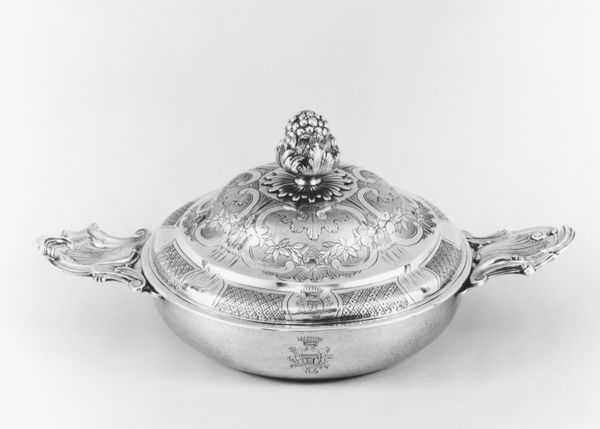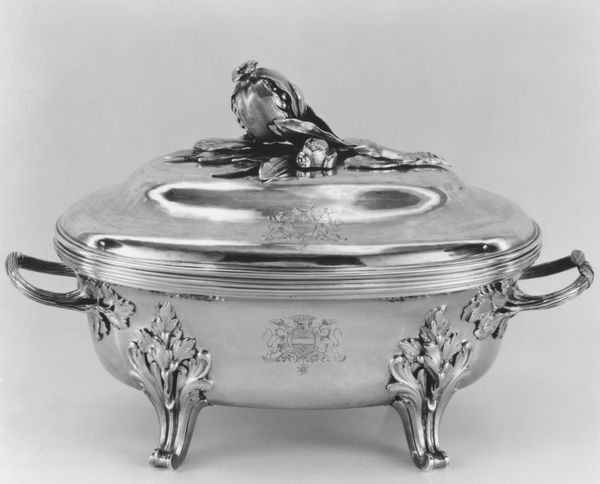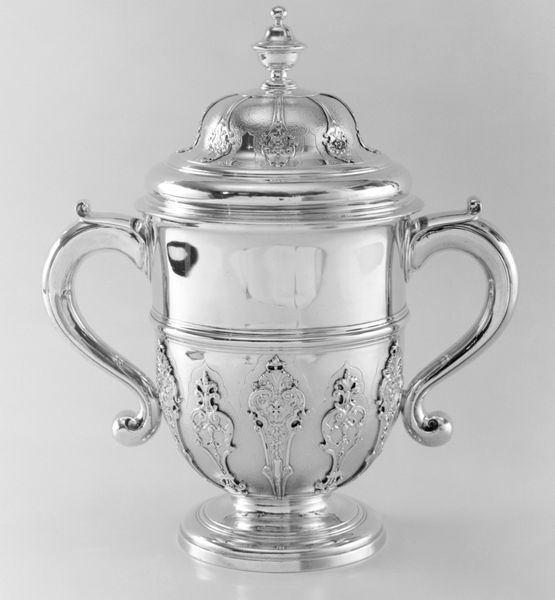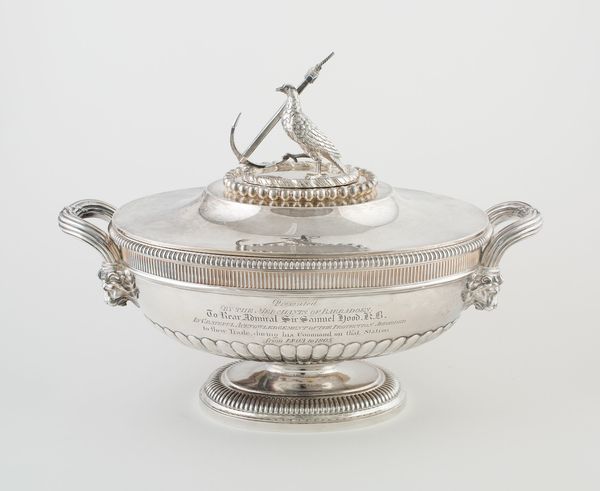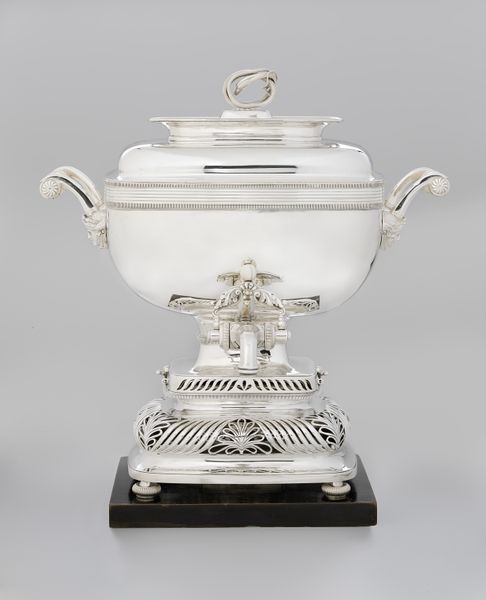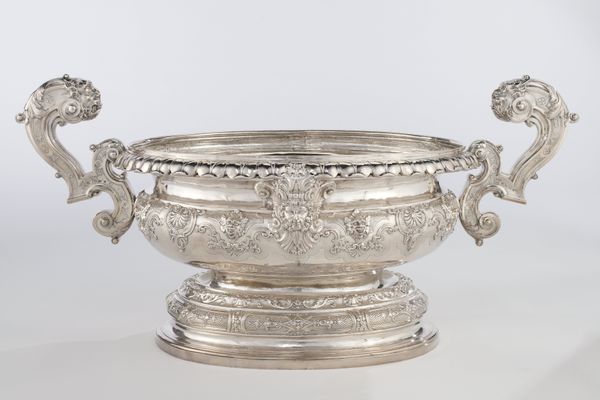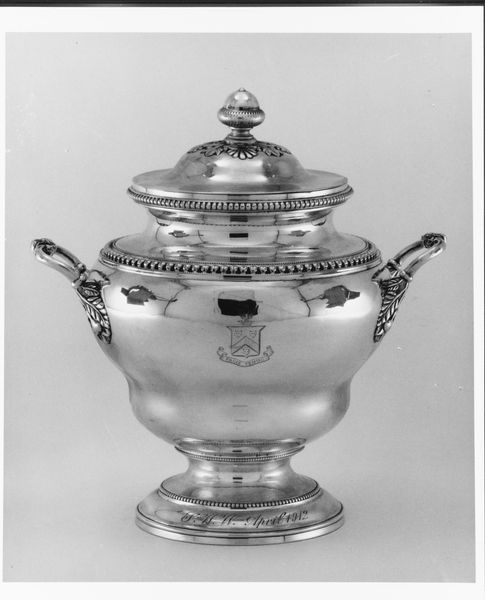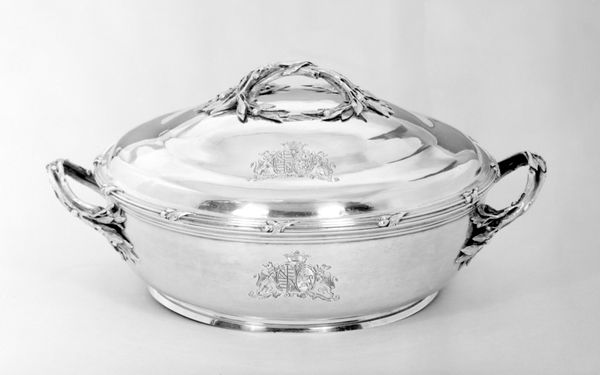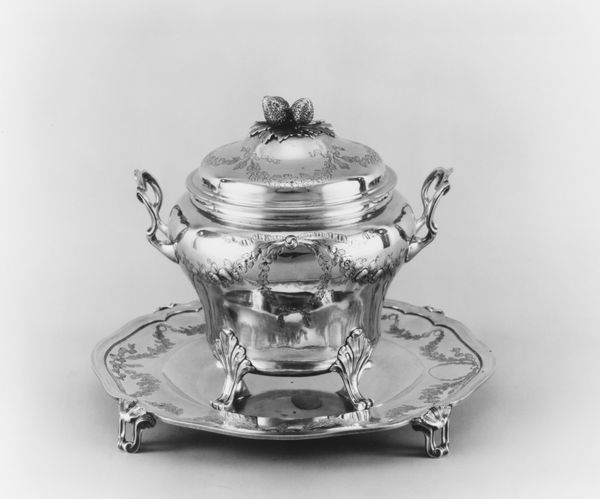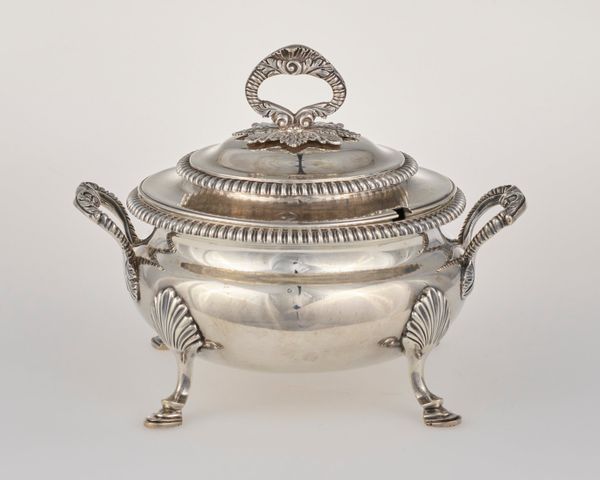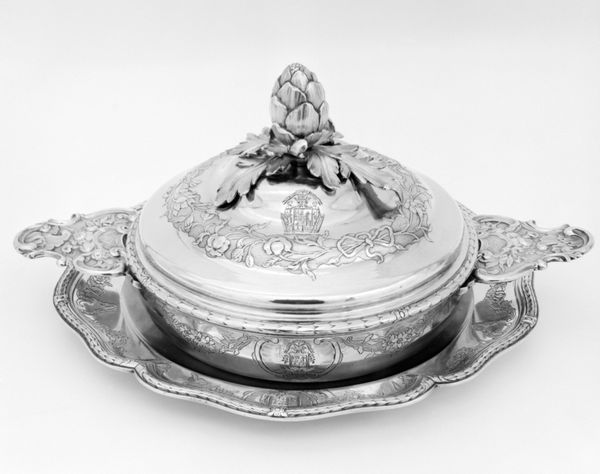
Vegetable dish with cover and tray 1781 - 1783
0:00
0:00
Dimensions: Overall (dish with cover .1a, b): 6 × 10 1/8 × 7 1/4 in. (15.2 × 25.7 × 18.4 cm); Diameter (tray .2): 9 5/8 in. (24.4 cm)
Copyright: Public Domain
Curator: Here we have a "Vegetable Dish with Cover and Tray," crafted between 1781 and 1783 by Jean-François-Nicolas Carron. The piece, residing at the Metropolitan Museum of Art, exemplifies Rococo style using silver. What strikes you first about it? Editor: Well, beyond its obvious shine, it gives off a slightly…severe vibe, doesn't it? Very symmetrical, lots of defined edges despite all that decorative work. Not quite the explosion of curves I typically associate with Rococo. Curator: That's interesting. Consider the materials. Silver, a precious metal, speaks to luxury and status. The level of craftsmanship—the chasing, the fine engraving, the delicate beadwork—all signal high-end production intended for an aristocratic clientele. It represents wealth, control, and curated refinement. Editor: Okay, yes, "curated refinement" hits the mark. I was almost getting a wedding-cake vibe but a cake ordered by a slightly humorless monarch. I do like the little birds on top, though. They seem almost... defiant against the rigid symmetry. Curator: Those birds function as a finial, a common motif in decorative arts of the period. They add a touch of naturalism and soften what could otherwise be an overwhelmingly formal piece. Look at the tiny engraved foliage patterns repeating around the dish. The chasing also imitates natural forms. Editor: It’s fascinating how such ornate objects became commonplace within specific social circles. Do you think the artisan felt pressure adhering so strictly to the era’s demands of excess? Curator: Absolutely. Craftspeople of Carron's era were navigating a complex economic and social landscape, influenced by aristocratic commissions and shifting cultural tastes. They would likely work as part of larger workshops where certain skill specializations were commonplace. Editor: I can almost picture a line of artisans meticulously hammering and engraving, each performing a specific part on objects like this. You’ve definitely shifted my perception – I now see all the effort required of the making, as well as this strange tension between lavish display and that hidden labor force that makes it all possible. Curator: Exactly. It serves as a potent reminder of how even the most beautiful objects are deeply entwined with social and economic processes.
Comments
No comments
Be the first to comment and join the conversation on the ultimate creative platform.
